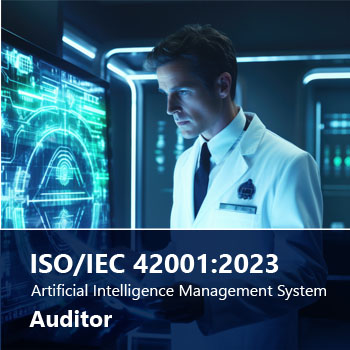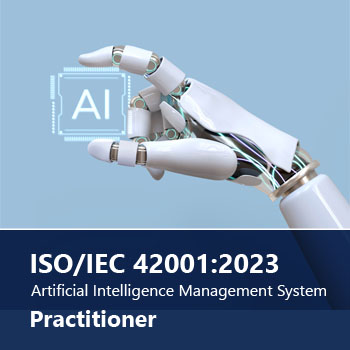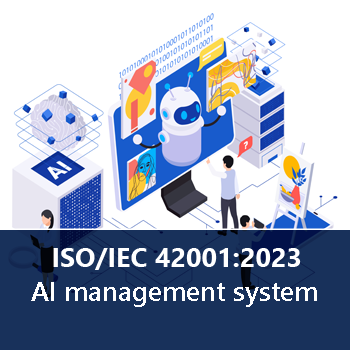So... what exactly is Responsible AI?

You’ve probably heard the phrase “responsible AI” more than a few times by now. It's one of those concepts that gets thrown around at conferences, in boardrooms and across social media. But what does it really mean?
Well… in short, responsible AI refers to the development and use of artificial intelligence in ways that align with society’s values, promote fairness and mitigate risks. As technology evolves, AI is becoming an integral part of our daily lives. Self-driving cars, virtual assistants, or AI generated medical diagnostics were science fiction twenty years ago. Today, they’re real, and they’re shaping how we live, work, and interact.
But with great power comes great responsibility.
At its core, responsible AI is about ensuring that the benefits of AI are realized without compromising ethics, safety or trust. This demands that AI systems are built and used in ways that are not just technically effective, but also socially acceptable and morally sound.
But, why does this matter?
It matters because AI is not just another tool. It makes decisions, it influences behaviors and interacts with people and institutions in profound ways. Leave it unchecked and it can easily reinforce biases, invade privacy and even cause harm. Responsible AI should be our prevention kit.
The 7 principles of Responsible AI
There isn’t a single, universally accepted framework for responsible AI, but a widely acknowledged set of guiding principles has emerged. These principles offer a foundation for ethical AI development and use. The 7 principles of responsible AI are:
- Fairness
AI systems should be designed to treat all people equally. For instance, a facial recognition system must work equally well across different skin tones to prevent racial bias. - Transparency
Users should be able to understand how and why an AI system reaches a decision. A financial AI that approves or rejects loans should provide clear explanations, not just black-box outcomes. - Non-maleficence
Like in medicine, this principle means “do no harm.” A self-driving car, for example, must prioritize safety and be designed to minimize harm during unavoidable incidents. - Accountability
Human oversight remains critical. Developers and organizations must take responsibility for AI behavior and have systems in place for error reporting and correction. - Privacy
AI must protect personal data. Whether it’s a voice assistant storing user queries or a city-wide surveillance system, privacy-by-design should be the rule, not the exception. - Robustness
AI systems must be secure and resilient to errors, attacks, and unpredictable situations. For example, a medical AI tool must still work accurately even with rare or incomplete data. - Inclusiveness
AI should work for everyone. Engaging diverse voices in the design process helps uncover potential ethical blind spots and ensures that AI systems are accessible and fair.
From principles to practice
The transition from theory to implementation is often where organizations stumble. Ethical intentions are a great start, but they must translate into practical, repeatable processes. That’s where standards like ISO/IEC 42001 come into play.
ISO/IEC 42001 is the first international AI management, and it helps organizations create the governance structures and operational practices needed to manage artificial intelligence responsibly. This includes requirements related to risk management, life cycle oversight, data quality, resource allocation, reporting of concerns and many more.
If you're serious about building a responsible AI framework, using ISO/IEC 42001 is a good idea.
Pillars of responsible AI in practice
To operationalize responsible AI, organizations should focus on a few critical areas:
✅ Top management commitment
Without real support from the company’s leadership it’s difficult (if not impossible) to implement and operate effectively any management system. The AI management system is no exception.
✅ High-quality data
Garbage in, garbage out. AI systems rely on data, and the quality of that data directly affects performance of the system. Data acquisition, provenance or preparation are aspects that require careful consideration.
✅ Skilled and ethical teams
The people building AI need training—not just in machine learning, but also in ethics, bias mitigation and security. Upskilling your team ensures that decisions are thoughtful and informed.
✅ Ongoing monitoring
Responsible AI doesn’t stop after deployment. Systems should be regularly tested, monitored and audited. Automated tools and human reviews can work together to detect issues early and adapt to changes.
✅ Human-in-the-loop
In high-stakes scenarios, like healthcare, criminal justice, or military decisions, AI should support human judgment, not replace it. For example, an AI can suggest a diagnosis, but the final treatment plan should come from a qualified doctor.
✅ Stakeholder engagement
Involving customers, communities, regulators and other stakeholders builds trust and adds valuable perspectives. Feedback loops should be established to surface concerns and drive improvement.
Responsible AI is optional?
AI is powerful—but its power must be shaped by responsibility, ethics and foresight. A poorly designed AI can cause real harm. A well-designed one can amplify human potential.
As AI systems become more embedded in business, government and everyday life, responsible AI is no longer a “nice-to-have.” It’s a business imperative. Not only does it reduce legal and reputational risk, but it also enhances brand trust and long-term sustainability.
Final thoughts
Artificial intelligence has the potential to solve some of humanity’s greatest challenges. But we must use it wisely. Responsible AI is the bridge between innovation and trust.
So, next time you hear the term “responsible AI,” you’ll know exactly what it means—and why it matters.
If you are knowledgeable of the framework proposed by ISO/IEC 42001 you can try our certification programs for AI management system practitioners or auditors, pass the online exam and get the recognition you deserve.


